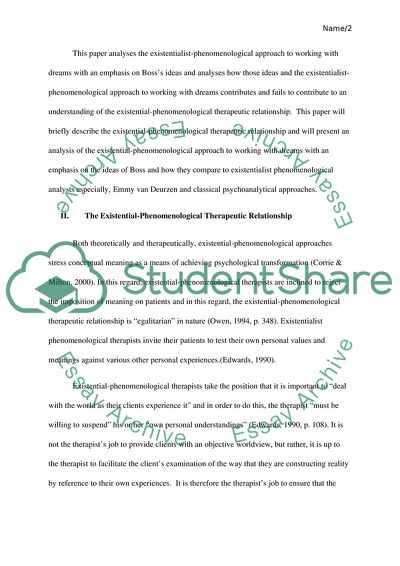Cite this document
(The Existentialist-Phenomenological Approach to Working With Dreams Essay, n.d.)
The Existentialist-Phenomenological Approach to Working With Dreams Essay. Retrieved from https://studentshare.org/health-sciences-medicine/1798912-existential-prospective-on-working-with-dreams-demostring-how-ideas-of-medard-boss-may-contribute-to-an-understanding-of-the-existentil-phenomenological-therapeutic-relationship
The Existentialist-Phenomenological Approach to Working With Dreams Essay. Retrieved from https://studentshare.org/health-sciences-medicine/1798912-existential-prospective-on-working-with-dreams-demostring-how-ideas-of-medard-boss-may-contribute-to-an-understanding-of-the-existentil-phenomenological-therapeutic-relationship
(The Existentialist-Phenomenological Approach to Working With Dreams Essay)
The Existentialist-Phenomenological Approach to Working With Dreams Essay. https://studentshare.org/health-sciences-medicine/1798912-existential-prospective-on-working-with-dreams-demostring-how-ideas-of-medard-boss-may-contribute-to-an-understanding-of-the-existentil-phenomenological-therapeutic-relationship.
The Existentialist-Phenomenological Approach to Working With Dreams Essay. https://studentshare.org/health-sciences-medicine/1798912-existential-prospective-on-working-with-dreams-demostring-how-ideas-of-medard-boss-may-contribute-to-an-understanding-of-the-existentil-phenomenological-therapeutic-relationship.
“The Existentialist-Phenomenological Approach to Working With Dreams Essay”, n.d. https://studentshare.org/health-sciences-medicine/1798912-existential-prospective-on-working-with-dreams-demostring-how-ideas-of-medard-boss-may-contribute-to-an-understanding-of-the-existentil-phenomenological-therapeutic-relationship.


